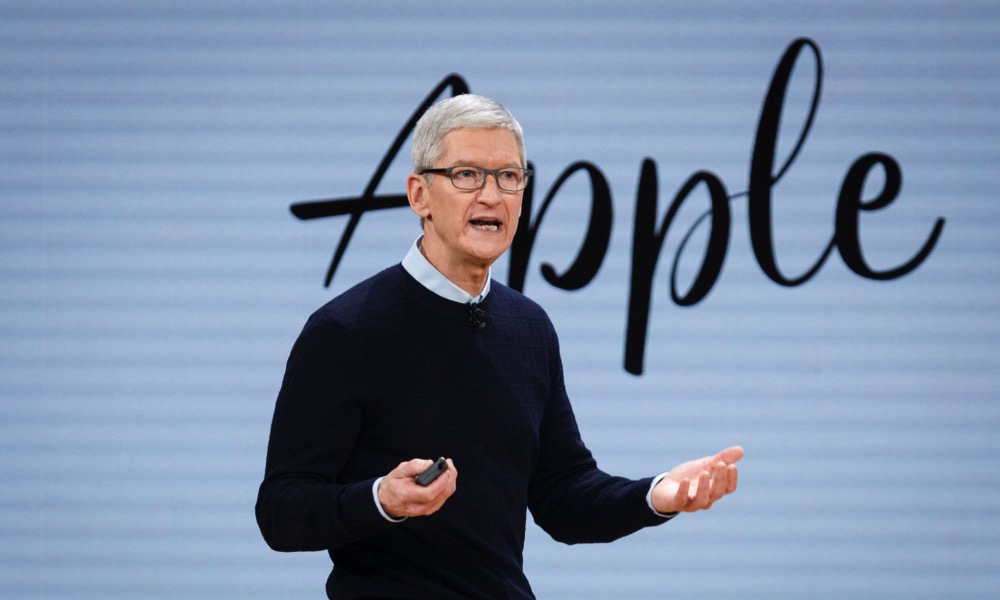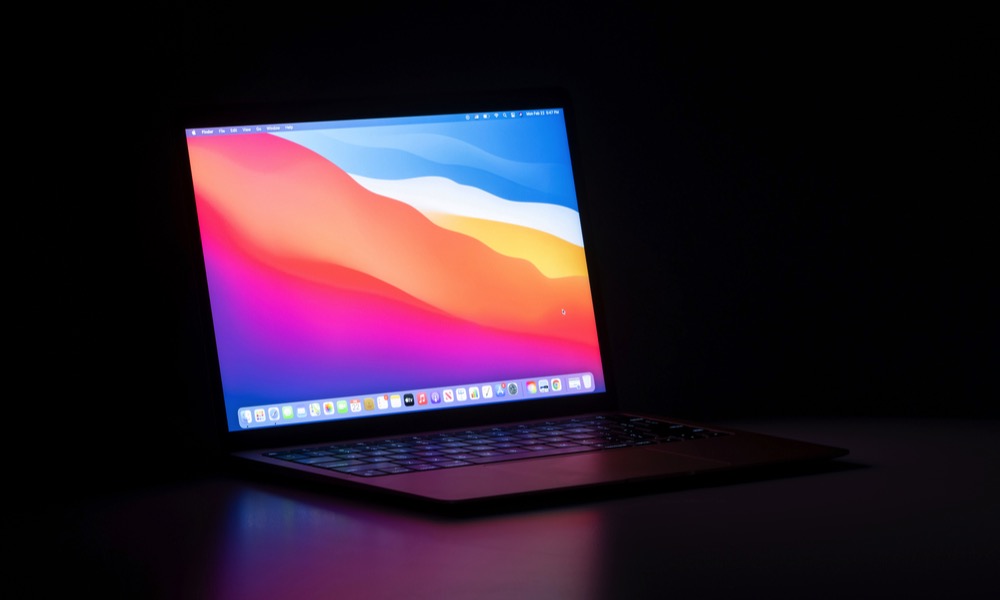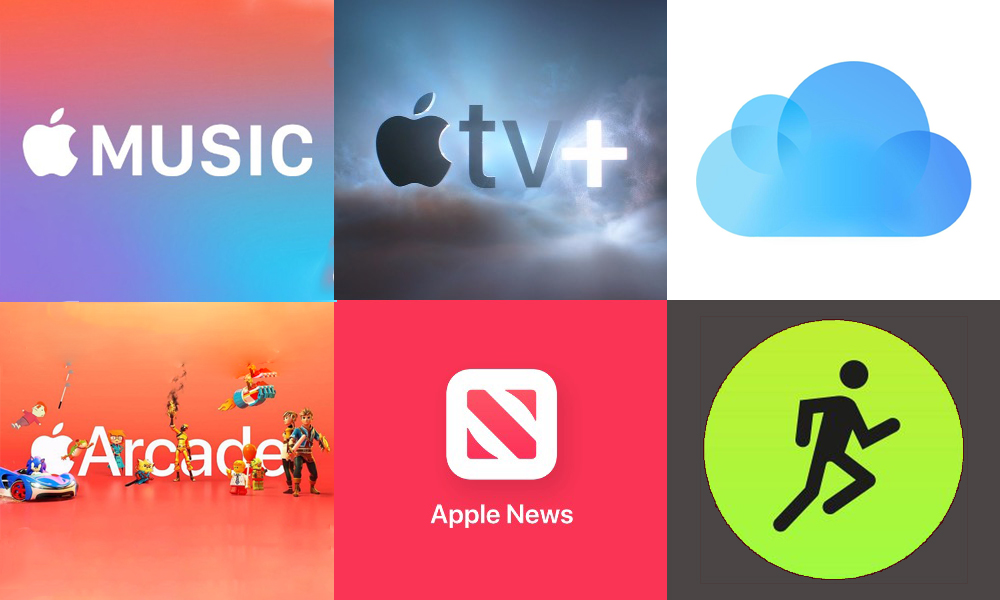Apple’s Not Slowing Down | 7 Interesting Takeaways from Its Q4 2021 Earnings Call
 John Gress Media Inc. / Shutterstock
John Gress Media Inc. / Shutterstock
By now, Apple’s streak of record-breaking quarters is something that we’re starting to take for granted, as it has continued to report sales and revenue often beyond most analysts’ wildest expectations.
What’s even more impressive is that it continued to break records year after year amidst a global pandemic. Over the past 18 months, it has seen almost all of its retail stores worldwide and the global electronics supply chain experience component shortages, which are hampering the supply of everything from PCs to cars.
Yet, on the surface, it appears that Apple has managed to weather this storm largely unscathed, turning in record-breaking profits for each of the quarters throughout 2020 and now all the way through 2021 as well.
Of course, it’s not all sunshine and rainbows. Apple still has more than a few challenges ahead of it, but it has clearly proven that it is more than capable of adapting and overcoming them. Read on for 7 Interesting Takeaways from Its Q4 2021 Earnings Call
The Numbers
This time around, Apple was able to return to some normalcy in terms of its Q4, with the entire iPhone 13 lineup released in September, as expected, and on sale in time for it to boost the quarter’s revenue.
The result was a very healthy boost in iPhone sales, but not only did that surpass last year’s $26.4 billion — sales that would have come from the iPhone 11, iPhone SE, and other older models — but it blew past the Q4 2019 quarter, which saw the simultaneous release of the iPhone 11, iPhone 11 Pro, and iPhone 11 Pro Max. That year Apple had almost $39 billion in iPhone sales, which was still a 16.5% increase from the $33 billion in iPhone sales from two years ago.
- iPhone: $38.9 billion (47% growth)
- Mac: $9.2 billion (1.6% growth)
- iPad: $8.3 billion (21.4% growth)
- Wearable, Home, and Accessories: $8.8 billion (11.5% growth)
- Services: $18.2 billion (25.6% growth)
Notably, despite the loss of sales in Q4 2020 due to the delayed iPhone release, Apple made up for it in every other category and still posted a record-breaking Q4.
This year’s numbers shatter that once again, with $83.4 billion in revenue — a 29 percent increase over last year’s Q4 2020 revenue of $64.7 billion.
Much of this was spurred by iPhone sales, but Apple also saw fantastic growth in its services business, along with healthy growth in the iPad and Wearables categories.
The Mac category grew only slightly by comparison, but Apple also only released a single new Mac in 2021, unlike last year which saw a whole new slew of Intel MacBooks in the spring, plus a summer release of the last Intel-based 27-inch iMac.
By contrast, September saw the release of the sixth-generation iPad mini and a new ninth-generation iPad, plus the 2021 M1-powered iPad Pro in the spring, both of which likely helped the iPad category grow by nearly $1.5 billion in sales over last year.
The M1 MacBook Air Drove Record-Breaking Mac Sales
Despite the rather modest single-digit increase in Mac sales, and no new Macs released during the quarter, Apple still managed to continue its record-breaking streak for Mac sales.
According to Apple CFO Luca Maestri, the last five quarters for Mac revenue have actually been the best five in Apple history, and that’s undoubtedly been driven by Apple’s new M1 chip.
In fact, Tim Cook said that there was incredibly strong demand for the M1 MacBook Air, specifically, which is understandable considering that it’s not only Apple’s most affordable Mac, but every benchmark has shown how this diminutive little MacBook leaves all but the very highest-end PC laptops in the dust.
Of course, it’s also fair to say that Mac demand has also been spurred by more folks working and learning from home in the midst of the pandemic, and Q4 covers the all-important back-to-school season — a time when many high school, college, and university students are in the market for new laptops to begin their studies.
Apple’s Services Now Boast 745 Million Paid Subscribers
Apple’s Services category remains second only to the iPhone when it comes to both revenue and growth, and this time around is jumped by just over 25%, to over $18 billion in revenue.
This was spurred by another surge in subscribers, which are now approaching three-quarters of a billion in paid subscriptions — 160 million more than Apple had at the same time last year.
Since this is the last fiscal quarter of 2021, Apple’s CFO Luca Maestri also shared that Apple’s Services have brought over $68 billion in total revenue for the year, which works out to triple what it was making in services six years ago.
Of course, Apple was a very different company six years ago, when the only mainstream consumer-focused service was Apple Music. Since then, it’s added Apple TV+, Apple Arcade, Apple News+, Apple Fitness+, and even monthly AppleCare+ subscriptions. Plus, it’s tied all those into new and affordable Apple One bundles that combine multiple services and iCloud storage plans to make them even more attractive to subscribers.
To be fair, it’s also worth noting that Apple is a bit opaque about what a “paid subscription” is. While this very obviously doesn’t include free trials, it’s likely encompassing those paying for any of Apple’s Services, from a $0.99 50GB iCloud Storage plan to a $29.95/month Apple One Premier bundle. Still, this is impressive growth for a quarter during which Apple didn’t announce any new services at all.
Concerning the overall revenue, though, it’s important to remember that “Services” encompasses more than just the obvious consumer-facing offerings. This is also where Apple’s 15–30% App Store commissions get slated, as well as its multi-billion dollar Google licensing deal, which is estimated to account for around $10 billion of Apple’s annual services revenue.
App Store commissions also likely accounted for $15–20 billion of last year’s revenue. Nonetheless, that leaves around $35-40 billion made from everything else, from subscriptions to sales of digital media on iTunes and Apple Books.
Apple Could Have Made $6 Billion More
While you wouldn’t know it from its record-smashing quarter, it turns out that Apple’s bottom line was, in fact, impacted by the ongoing global chip shortages, with Tim Cook telling CNBC that the company lost out on $6 billion in revenue due to supply chain issues.
"We had a very strong performance despite larger than expected supply constraints, which we estimate to be around $6 billion. The supply constraints were driven by the industry wide chip shortages that have been talked about a lot, and COVID-related manufacturing disruptions in Southeast Asia."
– Tim Cook
Apple Missed Analysts’ Expectations
Although Apple has repeatedly cautioned investors that it would be facing supply constraints for its products, this shortage did cause Apple to come in behind what Wall Street analysts predicted for this quarter. Even though Apple posted a 29% increase in overall revenue, it seems that investors had expected the company to do even better.
The consensus prediction among analysts was that Apple would post revenue of $84.85 billion overall, so it's $83.36 billion fell about $1.5 billion short of that. Not surprisingly, Wall Street had pegged the biggest growth in the iPhone category, expecting $41.51 billion in sales, versus Apple’s actual $38.87 billion.
That said, Apple did beat the estimates in two of its product areas, with Services coming in at $18.28 billion versus the $17.64 billion estimate, and a billion dollars more in iPad sales than predicted, at $8.25 billion versus $7.23 billion.
To be fair, Apple stopped providing any kind of official guidance to investors at the beginning of the global health pandemic, so it’s unclear if the company met its own expectations. This also means that analysts have a lot less information to base their predictions on, which could be resulting in some pretty unrealistic expectations too.
After all, Apple posted a staggering 47% increase in iPhone sales over last year, but that still wasn’t enough to satisfy Wall Street analysts, who expected a 57% growth. Apple’s stock dropped 3% in extended trading following the earnings call.
Apple Predicts Another Record-Breaking Holiday Quarter
Many analysts have also predicted that Apple will suffer during its critical holiday quarter due to the same chip shortages and supply constraints, but Apple’s CEO disagrees.
Cook acknowledges that the supply problems are likely to get worse before they get better, and in fact, he expects that in the coming month's Apple will likely lose even more potential revenue than the $6 billion it already left behind in Q4.
Despite this, however, he still says that he expects the holiday season to be another record-breaking quarter, with “solid year-over-year revenue growth” and the largest revenue in the company’s history."
This is actually quite a boast on Cook’s part. Even though holiday season sales always make each year’s October–December Q1 Apple’s biggest quarters of the year, last year’s delayed iPhone 12 release shifted sales from Q4 2020 to Q1 2021, resulting in $10 billion more in iPhone revenue than in prior quarters.
It remains to be seen whether the surging popularity of the iPhone 13 will be enough to beat this. However, it’s also likely that the new M1 Pro/Max powered MacBook Pro lineup will take Apple’s Mac sales numbers to new heights, and the new AirPods 3 should kick off a surge in Wearables sales. It's also likely that the colourful new HomePod minis will be popular during the holiday season.
Apple TV+ Has ‘Proved Itself’
Even though Apple remains a bit cagey about sharing actual subscriber numbers for its new streaming service, Tim Cook did share that the streaming service has “already proved itself to fans around the world.”
During the earnings call, Cook cited the eleven Emmy Awards that have been won by content on its streaming service, including the history-making Outstanding Comedy Series award won by Ted Lasso.
While most analysts still predict that Apple TV+ is seeing sluggish growth against its competitors, it’s clear that Apple is taking a slow and steady approach to growing out its content. Estimates as to subscriber numbers vary widely, with most in the 20–40 million range, but that’s still significantly fewer than the 100-million-plus subscribers to rival services like Netflix and Disney+.
It’s also unclear how many of these estimated subscribers are still on free trials, and how many are getting the service as part of an Apple One bundle. Of course, Apple has also never been a company obsessed with numbers and market share, since those don’t ultimately matter.
The real name of the game for any company is profitability. If Apple is making its money back from Apple TV+, either directly or via the halo effect of drawing more people into the Apple ecosystem, then it’s likely accomplishing what it set out to do.







